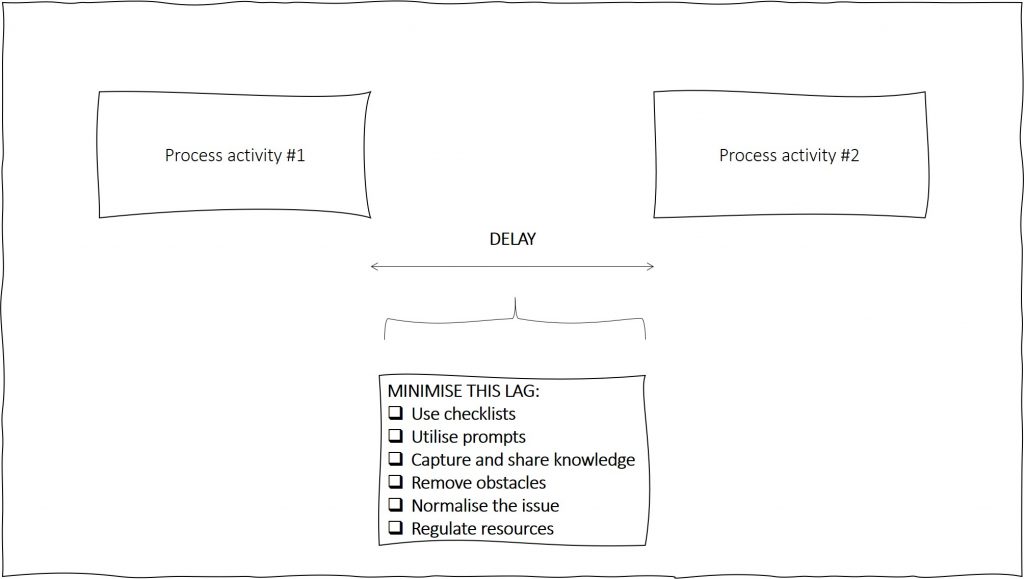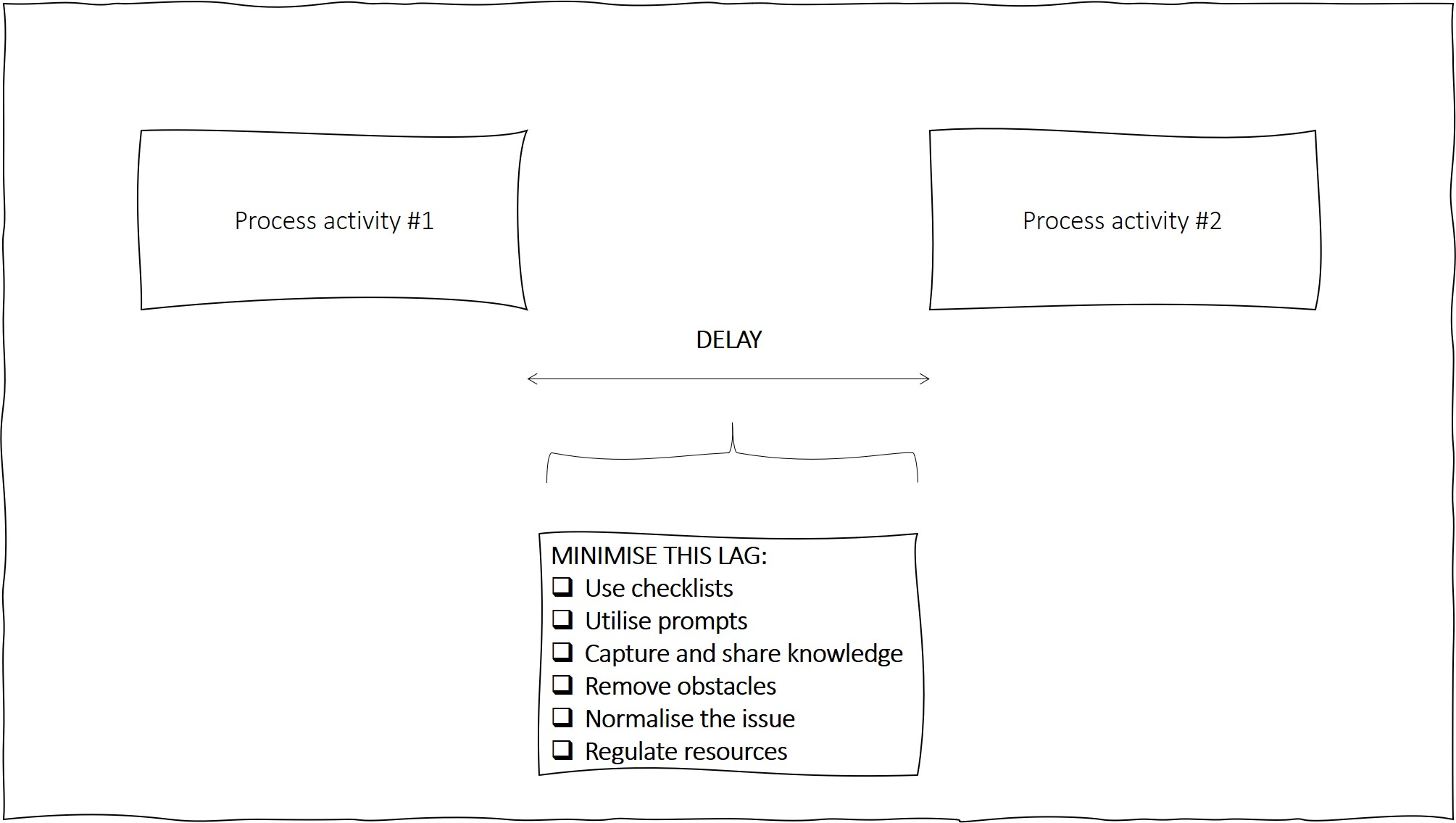Designing a good, effective, business process is the primary goal for many of us. But, what about making sure it delivers its results?
For many businesses, the flow of a business process is of parallel importance. The delays between the steps in a process is a good place to start this improvement.
In this article I will look at seven considerations about delays. Each one is designed to improve the flow of your business processes.
1. Use checklists
You often need to prime the next step in a process before it can start properly.
We know that the outputs of the previous step become the inputs for the next step. Often the outputs of one step don’t meet the needs of the next step and can lead to slow starts and a loss of efficiency.
Creating a simple checklist is a great way to maximise business process flow. People forget over time what they have to do and this can degrade how one process finishes. Avoid this degradation by using a checklist.
2. Utilise prompts
If you work on a production line you generally don’t need to be told when to start the next step in a process, it’s obvious. For many other processes this trigger isn’t as visible. When you don’t know when to start a process, work can start to queue. Queues get in the way of good business process flow rates!
Ensuring that the next step starts with a minimal delay is a great strategy. Developing a routine, to prompt the start of process steps, helps ensure this.
If you have a daily (or weekly) team meeting, you can tie these prompts into the agenda. Think of this strategy as gentle nudging rather than micro-managing!

3. Prepare, prepare, prepare!
If the team that execute the next part of the process aren’t prepared then a slow start awaits…
When you watch a world class relay team, they don’t stand still waiting for the baton. They start running before the handover of the baton (plus they undertake a ton of practice before the event!).
Are your teams prepared to continue the business process when the time comes? Does their performance improve or hinder business process flow?
If they aren’t prepared, they are like many teams… fumbling around for the baton as the other teams glide away.
4. Capture and share knowledge
Do your teams know what to do when starting their step in the business process? You can maximise business process flow when training and competence are in place.
Experience is a good place to gain competence. Tying this in with clear instructions enhances it. Documents such as Standard Operating Procedures (SOPs) are great in these instances.
When your team know what they need to do, and can do it, process delays shrink.
5. Remove obstacles
What is in the way of your team starting their step of a business process? Knowing what is in the way of your team can drive the flow of your business processes.
This is the job of any good leader and yields fast results.
Find out what is in the way of your team and help kick it out of the way. Doing this will improve your business process flow.
6. Normalise business process flow
If you keep talking about business process flow, it will become normal. If it becomes normal then improving it will become normal too.
Tie the topic into your regular meetings. Measure it. Evaluate it. Watch it improve as a team.
It is OK to have problems with the flow of your business processes. It is not OK to do nothing about it. Making the topic ‘normal’ is a key step to changing this mindset.
7. Regulate resources
What if you don’t have enough people to run your business process? How do you regulate this?
Some businesses need to work like a caterpillar (as a peristaltic wave). Pulsing their staff through the stages of the process to marry supply with demand.
How you monitor this and respond to it will be specific to your business. The outcome, however, will be an improvement in business process flow.
Improving business process flow performance is a worthy cause. By making a series of small changes, by removing the confusion, you can make dramatic gains. On time delivery can go up. Efficiency and productivity, up. You get the idea.
What if you haven’t looked at minimising the delays between your process steps before? Starting today is a good remedy!
